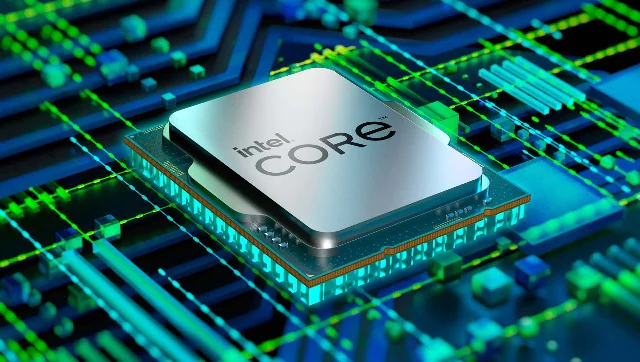Mehul DasJul 05, 2022 12:50:55 IST
Intel showcased the 12th Generation or the Alder Lake series of Intel Core Mobile & Desktop Processors, in India at the 12th Generation Intel Core Experience event. The processors are available across a number of platforms, ranging from the S-series or the desktop-only variants all the way to the H-series, HX series, U-series, and P-series for notebooks and other mobile devices.
The 12th Generation has been built on Intel 7 process and features a new architecture design that allows systems to leverage two types of specialized cores, performance cores and efficiency cores. This allows processors across Intel’s 12th Gen processors to deliver class-leading performance and snappy responsiveness.
We get to see a whole new generation of legacy technologies. We get to see support for DDR5, upto 4800 Mhz RAM. Chipsets for the 12th Gen processors are also backwards compatible with DDR4 RAM. We also get Thunderbolt™ 4 connectivity, and Intel® Wi-Fi 6E (Gig+).
The biggest breakthrough that Intel has made with the 12th Gen processors is the all-new performance hybrid architecture, which, Intel say, is its most significant shift in x86 architecture in more than a decade.
Basically, this is a combination of Performance cores and Efficiency cores to deliver ultimate performance. The Performance-cores or P-Cores are the highest performing CPU core Intel has ever built, for maximum burst and single-threaded performance. The Efficient-cores or E-Cores are designed for scalable performance-per-watt, for multi-threaded and multi-tasking performance. This is possible all thanks to Intel’s new process called the Intel Thread Director.
Intel Thread Director monitors any given set of instructions, analyses it and then helps the OS scheduler in allocating the different instructions to a dynamic set of P-core & E-cores to carry out the instructions in such a way that the machine remains snappy and very responsive. This allows the best possible utilisation of performance and efficiency.
What this translates to in real-life performance is that in case while playing a processor-heavy game, you suddenly need to start streaming on a platform, switching the streaming application would have no discernible impact on your gameplay, even under heavy loads.
Intel also introduced the new cache architecture that has been used for the 12th Gen Intel Core processors. Intel is using the new Common Intel Smart Cache architecture which is shared among the P-Cores, E-Cores, and graphics processors. Furthermore, they have increased the Smart Cache (L3) and L2 cache sizes, which drives large memory capacity and reduces latency. This in turn delivers faster game loading times and much smoother frame rates during gameplay.
The 12th Gen HX series is aimed towards mobile devices like laptops and notebooks and features up to 16 cores and supports overclocking.
The H-series have also been aimed at laptops and notebooks and offer up to 14 cores. The H-series processors will be paired with discrete graphics and will be mainly seen in gaming laptops.
The U-series offers up to 10 cores and it is mainly for ultra thin and light laptops. The P-series is for performance thin and light laptops and notebooks in the lower range.
As of now, there are limited laptops and notebooks with Intel’s 12th Generation processors, but soon, we can expect more OEMs to bring 12th Gen Intel chip-powered devices into the Indian market.












